EULAR Sjögren's Syndrome Disease Activity Index (ESSDAI ...
EULAR Sjögren's Syndrome Disease Activity Index (ESSDAI ...
EULAR Sjögren's Syndrome Disease Activity Index (ESSDAI ...
You also want an ePaper? Increase the reach of your titles
YUMPU automatically turns print PDFs into web optimized ePapers that Google loves.
inserm-00431527, version 1 - 12 Nov 2009<br />
The 96 real patient profiles and the 720 clinical vignettes were randomly assigned to the 40<br />
experts. Each expert had to rate 5 real patient profiles (rated by 2 raters each) and 20 clinical<br />
vignettes (18 were “unique” and 2 were “common” to 2 raters). For the survey, an internetsecure<br />
relational database was constructed. Patient data were presented chronologically, and<br />
the responses could not be changed. For all visits of each profile or vignette, experts had to<br />
assess disease activity by use of the PhGA on a 0-10 numerical scale and a 5-point scale<br />
(inactive, low, moderate, high, very high activity). For the first visit of each profile or<br />
vignette, they also had to evaluate the plausibility of each patient case with use of a 5-point<br />
scale (very unlikely, unlikely, possible, likely, very likely) by answering the following<br />
question: “Please indicate, according to your clinical experience and knowledge of the<br />
disease, the likelihood that this patient scenario is a real case”.<br />
Statistical methods<br />
Determination of domain weights and construction of the <strong>ESSDAI</strong><br />
Realistic clinical vignettes were used to determine domain weights. <strong>Disease</strong> activity assessed<br />
by the PhGA was used as an external criterion. Bivariate analysis involved Pearson’s<br />
correlation between PhGA and each domain separately; for each domain, scores ranged from<br />
0 = “no activity” to 3 = “high activity”. All domains were entered into multivariate models;<br />
the PhGA was used as a dependant variable and each domain was an explanatory variable.<br />
Two models were evaluated: a multiple linear regression model and a robust regression model<br />
with the least-median-of-squares method with an MM estimator.[21, 22] The weights<br />
assigned to each domain were derived from the regression coefficients of the multivariate<br />
model and rounded to form simplified indices. The weight of each item was obtained by<br />
multiplying the weight of the domain by the level of activity.<br />
Preliminary validation<br />
The <strong>ESSDAI</strong> was then calculated for all real patient profiles and realistic clinical vignettes.<br />
Construct validity was assessed by the strength of correlation between the <strong>ESSDAI</strong> score and<br />
the disease activity score assigned by the expert.<br />
Sensitivity analyses<br />
To evaluate the stability/robustness of the domain weight estimation, other models were<br />
tested: a logistic regression model with the 5-point scale used as an external criterion and<br />
different multiple linear regression models after pooling items that clustered.<br />
Patient profile plausibility<br />
Evaluation of patient profile plausibility of realistic clinical vignettes was compared to that of<br />
real patient profiles by a Cochran-Armitage trend test.<br />
Reliability of disease activity scoring<br />
The evaluation of clinical vignettes common to 2 raters was used to assess inter-rater<br />
reliability:<br />
- For the 0-10 PhGA: intraclass correlation coefficient (ICC) and Bland and Altman<br />
graphical analysis[23, 24]<br />
- For the 5-point scale: global agreement and Kappa statistics[25, 26]<br />
The evaluation of real patient profiles was used to assess intra-rater reliability by the ICC, if at<br />
the first follow-up visit, the physician considered the disease activity unchanged. ICC<br />
confidence intervals were estimated with bootstrapping methods, with 1000 replications.[27]<br />
For all statistical analyses, a p-value less than 0.05 was considered statistically significant. All<br />
statistical analyses involved use of SAS release 9.1 and R release 2.2.1 statistical software<br />
packages.<br />
6


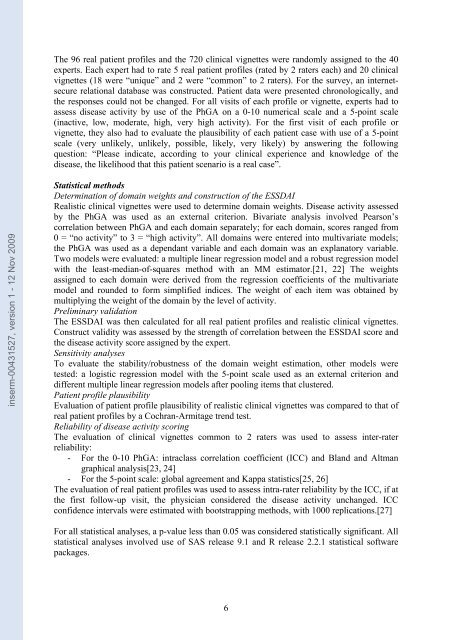

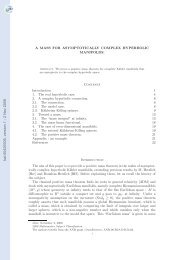

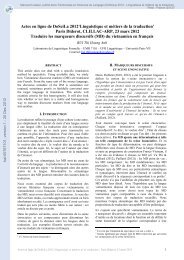
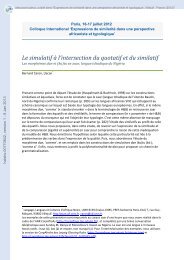
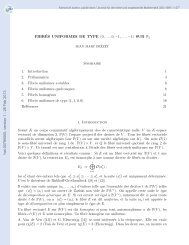
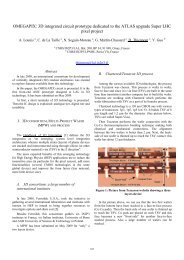
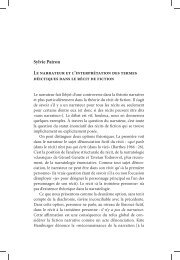
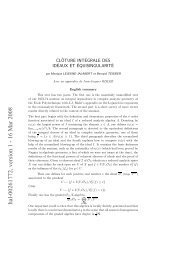
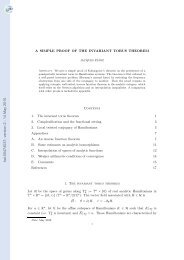

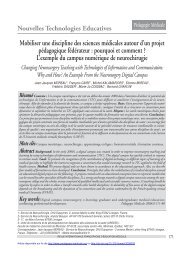

![[tel-00433556, v1] Relation entre Stress Oxydant et Homéostasie ...](https://img.yumpu.com/19233319/1/184x260/tel-00433556-v1-relation-entre-stress-oxydant-et-homeostasie-.jpg?quality=85)